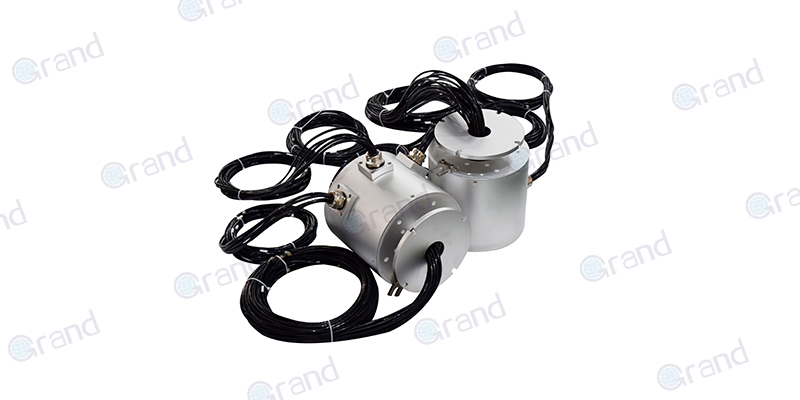In the vast landscape of mechanical engineering, there lies a multitude of components that work together to develop and maintain complex machinery systems. Among these unsung heroes is a pivotal device known as the slip ring seal. A slip ring seal, also known as a rotary electrical interface, is a device that allows the transmission of power, electrical signals, or data between a stationary system and a component that rotates or moves. It serves as a bridge between the two conflicting movement systems, ensuring a seamless and continuous flow of power or signals.
Often operating behind the scenes, slip ring seals are integral in a wide variety of applications. Their functionality ranges from enabling precise rotations in medical imaging devices, and facilitating power transfer in wind turbines, right up to ensuring the continuous operation of production lines in industrial settings. The expansive versatility and adoption of slip ring seals make them an essential yet underappreciated element within numerous machine systems.
This integral device’s uniqueness lies in its capacity to withstand high rotational speeds while maintaining data integrity and the power supply. Yet, despite their integral role, slip ring seals often remain in the backdrop, less acknowledged than the main equipment they serve. However, without their functionality, operations of numerous vital mechanisms within various industries would come to a standstill.
Emphasizing their role and understanding the intricacies of a slip ring seal operation will provide a broader comprehension of many modern machinery operations. Over the course of this article, we aim to cover the details of slip ring seals—right from their critical importance, functioning, and common problems faced, to the future perspectives that surround these formidable mechanical components.
The Importance and Uses of Slip Ring Seals
Like every unsung hero in a success story, slip ring seals discreetly execute their function, ensuring the smooth running of various machinery and equipment. They are instrumental in facilitating an unimpeded flow of electricity, signals, or data between stationary and rotating parts. This results in seamless operation, which is imperative for many mechanical and electromechanical systems.
Slip ring seals hold immense significance due to the pivotal roles they play. For instance, wind turbines, transmit electric power produced by blades’ rotary movements to the grid without limiting the turbine’s rotation. This simultaneous maintenance of electrical connections and movement is undeniably crucial in many machinery operations.
Commonly found in varying devices, slip ring seals make an appearance in multiple locations and industries. Industrial machinery is one such domain where slip ring seals are ubiquitous. They are applied in production lines, assembly machines, and various other mechanical systems that demand power or signal transfer between rotating and fixed parts. Think about the automated rotary tables, revolving doors, or even a simple amusement park carousel—all these heavily rely on the function of slip ring seals.
Their uses are not limited to heavy machinery either. In the healthcare industry, slip ring seals are integral to medical scanning devices such as CT and MRI machines, which depend on uninterrupted rotations to provide high-resolution and accurate images. Without the relentless work of slip ring seals, these critical medical imaging devices wouldn’t be able to function.
Moreover, their influence spans wind turbines used in renewable energy production. Here, they allow for the continuous transfer of electric power from the rotating generator hub to the stationary grid connection. They ensure that regardless of the turbine’s movement or the wind’s direction, electricity generation remains unhindered.
The types of machines that use slip ring seals are extensive and varied. From camera systems in media and broadcasting that need to pivot continuously, to heavy-duty excavators in construction, to precise antenna systems in telecommunications, slip ring seals are indispensable. Even domestic items like revolving cake decorating stands or rotating microwave plates employ similar technology.
In essence, slip ring seals are master facilitators, bridging the movement gap between stationary and rotating systems while allowing a relentless transmission of power or data. Their wide-ranging applications across diverse industries and machines testify to the immense functional ability of these vital components.
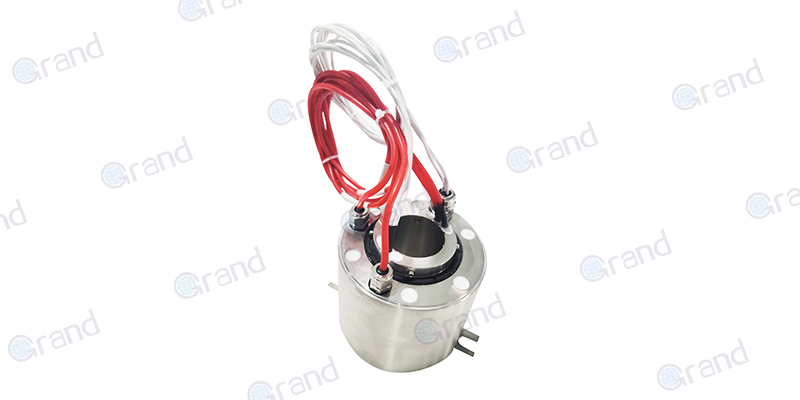
How Slip Ring Seals Work
At its core, a slip ring seal stands as a testament to the epitome of simple yet innovative engineering. Its primary function is to maintain a continuous form of electrical connection between static and rotary parts of a machine, thereby allowing the transfer of power or data during operation.
To understand the function of slip ring seals, it is essential first to recognize their basic structure. A slip ring seal, or rotary electrical interface, typically consists of two primary components: the rotor (rotating part) and the stator (stationary part).
The rotor is attached to, or integrated with, the part of the equipment that is expected to move or rotate. It holds numerous independent circuits, each consisting of a conductive ring, and on these rings make contact with the brushes which are part of stators. The brushes, often made of precious metal or graphite, maintain a consistent touching point on these rings, despite the rotation of the equipment. This consistent brush-to-ring contact enables the transfer of power, data, or signals from the rotating component to the stationary part of the machine, or vice versa.
The essential technology that enables slip ring seals’ function is the careful design and use of conductive materials in their construction. There is a delicate balance between ensuring minimal friction, promoting smooth rotation, and optimizing conductivity. Too much friction can lead to wear and tear, shortening the seal’s life, whereas inadequate conductivity could lead to loss of power or signal fidelity during transmission.
Depending on their specific application, slip ring seals might also incorporate various additional technologies. For instance, some slip rings integrate fiber-optic rotary joints for the transmission of optical signals, or fluid rotary unions to transfer hydraulic fluids or compressed air in applications like excavators or rotating cooling drums.
In essence, the work of a slip ring seal can be likened to a diligent postman who ensures that all letters (signals or power in this context) are accurately delivered (transmitted) to their respective destinations (stationary or rotating machinery parts), irrespective of challenging environmental conditions (speed and direction of rotation). This dynamic and reliable workhorse of a component thus ensures that various machines across industries work seamlessly, maintaining functionality amid motion.
Different Types of Slip Ring Seals
As diverse as their applications are, so too are the types of slip ring seals available in the market. Ingenious advancements and fine-tuning of technology have led to the creation of a plethora of slip ring seal variants, each bearing specific characteristics designed to cater to particular equipment needs.
Capsule Slip Rings are compact-sized devices, encapsulated in a housing with pre-integrated circuits for quick installation. They find common use in devices with space restrictions like CCTVs, miniature motors, and robotics due to their efficient size and easy maintenance.
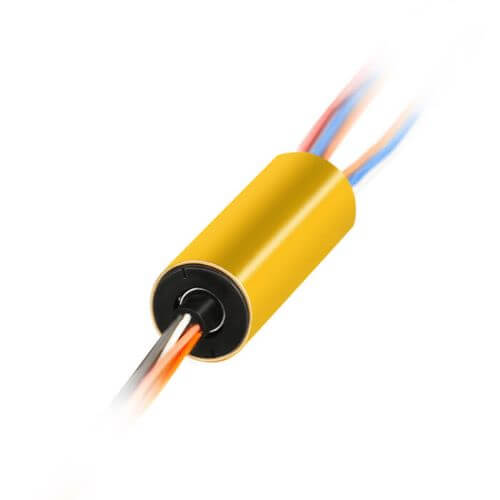
Through-bore slip Rings, also known as hollow shaft slip rings, feature a central hole to accommodate other components. This enables them to facilitate power and signal transmission while allowing the passage of other machinery elements, such as shafts or cables through the center.
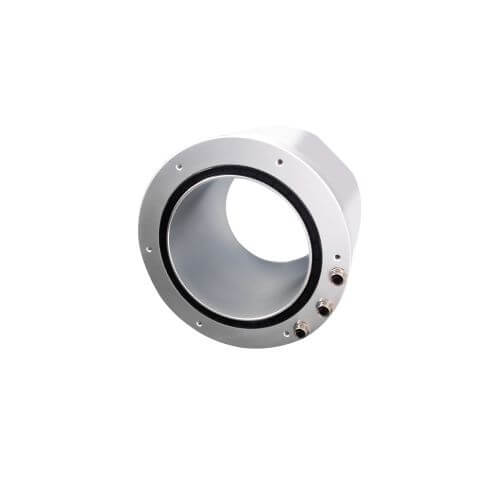
Pancake Slip Rings, as the name suggests, embrace a flat disc-like design rather than a cylindrical one. This allows a smaller axial dimension but a larger radius; hence, they are suitable for systems requiring low height but having ample radial space, like in radar antennas.
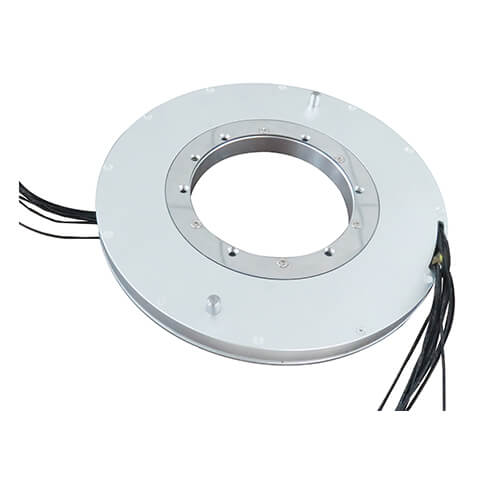
Ethernet slip rings are specially designed to convey Ethernet signals over rotating interfaces. The burgeoning trend of integrating network capabilities into different equipment makes this type of slip ring increasingly important.
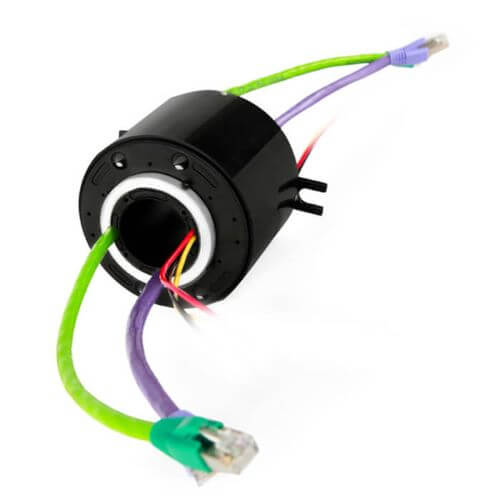
Fiber Optic Rotary Joints (FORJs), although technically not a traditional slip ring, deserve mention. These high-tech devices allow for the passage of optical signals across rotating interfaces, providing ultra-high-speed data transmission and resistance to electromagnetic interference.
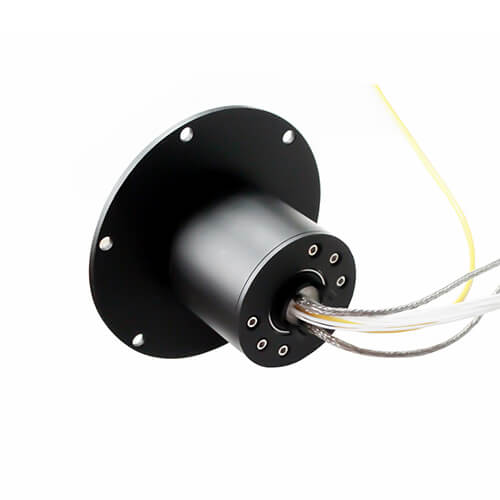
The choice of a slip ring seal heavily depends on the application it is meant for. A multitude of factors come into play, including operating speed, operating environment, number of circuits, voltage and current levels, type of signal to be transmitted, the space available for installation, lifespan requirements, and more. For example, an application requiring the transmission of large amounts of data might be best equipped with an Ethernet slip ring or FORJ. Meanwhile, a wind turbine may require a more robust, high-current slip ring, designed to withstand harsh environmental conditions.
Therefore, understanding the specific requirements of your application is crucial when choosing the appropriate type of slip ring seal. A well-informed selection can not only enhance the operational efficiency and longevity of your equipment but also prevent potential function disruptions in your machinery.
Materials and Design of Slip Ring Seals
The broad application landscape of slip ring seals necessitates careful consideration of material choice and design. The hero of this story needs to be robust, adaptable, and consistent, surviving high rotational speeds, possible temperature changes, and potential vibrations—all while maintaining high signal integrity and power supply.
Materials
Certain materials have emerged as favorites in the construction of slip ring seals, namely precious metals, copper, and graphite.
Precious metals like gold, silver, and palladium are often employed for the construction of slip ring seals, specifically for the contact points (brushes and rings), due to their excellent electrical conductivity and resistance to corrosion. Gold, for instance, stands up well to oxidation and provides consistent low-resistance electrical contact, which is essential for minimizing signal noise or power loss.
Copper is also frequently used as a conductor due to its high electrical conductivity, second only to silver. Copper alloy rings, paired with precious metal brushes, allow for excellent transmission of electricity across the rotary interface.
Graphite or carbon is chosen for brushes in some heavy-duty slip ring seal applications. Graphite brushes provide a longer lifespan and can handle higher loads in comparison to precious metal brushes. While they do not offer the same level of electrical performance as their precious metal counterparts, they can be advantageous in environments where durability and load-bearing capacity are key.
Design
For slip ring seals’ design, the key goal is to facilitate an uninterrupted flow of power, signal, or data between stationary and rotating parts. The cylindrical form, with the rotor and rings housed within the stator, is most commonly used owing to its compactness and ease of assembly. However, depending on the application, other design variants may be chosen.
Capsule Slip Ring Seals are essential for low-power applications where space is limited—think smaller robotics, tiny motors, and certain medical devices.
Pancake Slip Ring Seals are chosen when a minimum height is required while the radial space is not an issue. This flat, disc-style design is well-suited to antennae and cable reels.
Through-Bore or Hollow Shaft Slip Ring Seals house a central hole (the bore) to accommodate other components like shafts or hydraulics through the slip ring, making them ideal for wind turbines and certain industrial machinery.
Mercury Wetted Slip Rings are sometimes used due to their exceptionally low resistance. However, due to the dangerous nature of mercury, their use is limited and requires special handling precautions.
In conclusion, the choice of proper materials and design for a slip ring seal must be tailored to the intended application, balancing factors like durability, performance requirements, environmental factors, and any space constraints. A meticulous understanding of these various aspects ensures the creation of a slip ring seal optimally suited for its function, paving the way for improved efficiency and longevity of machinery systems.
Slip Ring Seal Installation and Maintenance
To fully utilize the potential benefits of slip ring seals in any machinery application, ensuring proper installation, inspection, and maintenance is crucial. Missteps during these processes can cause premature wear and tear, resulting in compromised system performance or even equipment malfunction. Therefore, it is particularly important to pay close attention to these aspects for the seamless integration of slip ring seals into the machinery.
Installation
The process of slip ring seal installation will vary depending on the specific type and application. However, some general steps stand as guiding principles:
- Choose the correct specifications: Before installing, ensure that the slip ring seal you have selected aligns with your equipment’s requirements. This includes parameters like dimensions, number of circuits, voltage and current ratings, operating speed, and signal type.
- Perform pre-installation inspections: Make sure that the slip ring is in optimal condition before installation. Check for possible damages incurred during shipping, storage, or handling. Verify that the surface of the rings and brushes is clean and free from dust, oil, or other contaminants.
- Follow the manufacturer’s instructions: Be meticulous about adhering to the included installation guidelines. These instructions may cover aspects such as torque specifications for screws, guidance on brush pressure, information about machining tolerances, and other specific guidance aligned to the slip ring design.
- Align the mounting: Make sure that the slip ring seal mounting is correctly aligned with the corresponding equipment components. Misalignment can lead to uneven loads and undue stress on the slip ring, causing rapid wear or failure.
- Connect the wiring: Once the slip ring seal is mounted, connect the wiring according to the manufacturer’s instructions or applicable wiring diagrams. Ensure that the connections are secure and properly insulated to maintain performance and safety.
Maintenance and Inspection
Routine maintenance and inspection of slip ring seals will ensure sustained efficiency and prevent unforeseen failures.
- Check brushes and rings: Regularly inspect the contact surfaces of the brushes and rings for signs of damage, uneven wear, or contamination. Replace brushes that have worn down beyond recommended limits, or if excessive wear or unevenness is detected on the rings.
- Lubricate: Some slip ring seals may require periodic lubrication. Consult the manufacturer’s recommendations on lubrication intervals and the type of lubricant to be used.
- Monitor electrical characteristics: Routinely measure parameters such as contact resistance, insulation resistance, and voltage drop across the slip ring to verify that the device is still operating in an acceptable range.
- Clean: Keep the slip ring seal and its surroundings free from dust, debris, and other contaminants. Contamination can reduce signal quality, increase friction, and contribute to surface wear.
- Document: Maintain records of inspection and maintenance activities. These records can help diagnose problems, evaluate changes in performance over time, and provide assistance in predicting future maintenance needs.
The Importance of Regular Maintenance
Conducting regular maintenance of slip ring seals can prevent avoidable machine downtime, extend the longevity of your equipment, and minimize long-term costs. Furthermore, well-maintained slip ring seals contribute to consistently better signal transmission and overall improved system performance.
In summary, proper installation, inspection, and consistent maintenance of slip ring seals are vital components of efficient and long-lasting machinery operation. By adhering to manufacturer guidance, routinely evaluating the health of the slip ring seals, and being diligent about regular maintenance, you can maximize your slip ring seal’s performance and effectively support your machinery for years to come.
Common Problems with Slip Ring Seals
Despite their pivotal role in numerous pieces of equipment, slip ring seals aren’t immune to potential issues. Components may wear out, damage may occur, environmental conditions may suck the life out of them, and more. Understanding the most common problems, their causes, and their potential impact on machinery is imperative for preventing operational disruptions and maintaining a high standard of efficiency.
Key Issues
Worn-out Brushes: The brushes, sitting in constant contact with the rotating rings, endure the most wear in a slip ring seal. Excessive or uneven brush wear can hinder the formation of smooth electrical contact, introducing electrical noise or fluctuating power transmission.
Degradation of Contact Surfaces: The surfaces of the brushes and rings can degrade due to a range of factors—temperature, humidity, corrosion, oxidation, etc. Degraded contact surfaces can lead to undesirable electrical characteristics and performance problems.
Misalignment: Improper installation or use can result in misalignment of the brush block and the slip ring. This may cause uneven wear on the brushes or rings, creating redundant frictional heat and affecting rotational smoothness.
Electrical Noise: Factors like dirty contact surfaces, worn-out brushes or bearings, and unsteady brush contact, among others, can introduce electrical noise, leading to data errors or interference in signals being transmitted.
Causes for these Issues
The main factor leading to brush wear is normal usage, as brushes rub against the rings constantly during operation. However, improper installation or excessive brush pressure can accelerate this process.
Contact surface degradation can stem from a multitude of causes – exposure to harsh environments, use of incompatible lubricants, lack of routine cleaning, or electrical events like arcing or sparking.
Misalignment usually results from incorrect installation or failure to properly maintain supporting mechanical interfaces. Poor quality control during the assembly of the equipment or the slip ring itself can also be a cause.
Electrical noise can have a variety of origins, from physical factors like dirty contact surfaces or worn-out parts to electrical factors like ground loops or externally radiated electromagnetic interference.
Impact on Overall Equipment Functionality
The problems listed above can severely impact the performance and longevity of both the slip ring seal and the equipment it serves.
Worn-out brushes and degraded contact surfaces can disrupt power supply or signal transmission, leading to unpredictable performance or system shutdown.
Misalignment can induce excess mechanical stress which can hasten the wear of brushes and rings, further deteriorating electrical performance and potentially impacting other mechanical parts of the equipment.
Electrical noise can corrupt data signals, causing potentially significant errors or system malfunctions in data-sensitive equipment.
In conclusion, while slip rings offer a diverse array of benefits to many types of machinery, certain problems can arise that might impair their function and the overall operation of the system involved. Accurate knowledge of these issues, their causes, and potential effects allows for early problem detection and effective troubleshooting, thereby promoting equipment longevity and operational efficiency. Regular maintenance and inspection can go a long way in preventing these common issues from turning into serious, costly problems.
Troubleshooting and Repair of Slip Ring Seals
Troubleshooting and repairing slip ring seals requires a systematic approach and careful attention to detail. This section provides guidance on basic troubleshooting for common issues, identifying situations warranting professional intervention, and sharing real-world examples to illustrate these principles.
Basic Troubleshooting Techniques
Issue: Worn-out Brushes
Examine the brushes for noticeable signs of wear. If they’re worn beyond the recommended limit or exhibit uneven wear, replacement is necessary. Ensure that the replacement brushes align with the manufacturer’s specifications.
Issue: Degraded Contact Surfaces
Inspect the rings and brushes for signs of degradation. If corrosion or oxidation is apparent, cleaning the surfaces may sometimes resolve the issue. Take care to avoid using abrasive materials that could further damage the surfaces. In severe cases, consider replacing the slip ring.
Issue: Misalignment
Check the alignment of the brushes to the rings. Following the manufacturer’s guidelines, adjust the assembly as needed to rectify misalignment. In cases of serious misalignment or mechanical damage, replacement may be the best option.
Issue: Electrical Noise
Evaluate the electrical properties of the slip ring for excessive noise. Try cleaning the contact surfaces to reduce the noise. If problems persist, a more detailed investigation into potential interconnected components or electrical supply issues may be necessary.
When to Call a Professional
While basic troubleshooting can rectify some common issues, there are situations when you should call a professional:
Recurring Issues:
If a problem keeps arising even after correct and repeated troubleshooting attempts, it’s time to seek professional help. The root cause could be deeper than expected.
Complex Issues:
If you encounter a problem that is beyond basic troubleshooting abilities or understanding, reach out to a professional engineer or a service technician.
Replacement:
If a component or the entire slip ring seal needs replacement, engage a professional to ensure correct specifications and installation.
In all cases, be sure to refer to your equipment’s service contract or warranty terms. Some repairs may be covered under these agreements, and unauthorized repairs could void these benefits.
Real-Life Examples
Example 1: Misaligned Assembly
A manufacturing plant noted the premature failure of several slip ring brushes. The inspection by a service technician found a misalignment between the brushes and the slip rings due to an assembly error. The issue was corrected by realigning the assembly, leading to a significant decline in premature wear.
Example 2: Persistent Electrical Noise
A radar system struggled with persistent electrical noise from its slip rings, disrupting proper function. Basic cleaning efforts did not alleviate the problem. Professional intervention identified a poorly grounded component in the electrical supply circuit as the culprit. Grounding corrections resolved the noise issue, leading to improved system reliability.
These examples highlight the importance of troubleshooting and repair in maintaining the performance of slip ring seals. Knowledge of basic troubleshooting techniques can solve many common issues. However, understanding when to request professional assistance can alleviate more complicated problems and protect system integrity. By considering each issue in the context of its system and operation, you can effectively troubleshoot and repair to ensure the longevity and efficiency of your slip ring seals.
Future of Slip Ring Seals
The evolving world of technology brings a wave of change not only to cutting-edge fields of science but to conventional devices like slip ring seals as well. As the complex systems they serve become more sophisticated, slip ring seals continue to progress, benefiting from technological advancements and innovative thinking.
Developing Technologies and Innovations
Fiber-Optic Slip Rings (FORJs):
FORJ or Fiber Optic Rotary Joints are the optical equivalents of electrical slip rings. They allow uninterrupted transmission of optical signals, paving the way for higher bandwidth and interference-free data transmission, often essential in modern high-tech applications.
Wireless Slip Rings:
Wireless slip rings aim to reduce mechanical wear and maintenance requirements significantly by using electromagnetic or radio-frequency connections instead of physical brushes and rings for signal transmission.
Hybrid Slip Rings:
Combining elements of traditional electrical slip rings with FORJs or other transmission means, hybrid slip rings are becoming more commonplace. They offer the flexibility to handle power, electrical signals, and high-speed data in a single device.
Material Innovations:
As materials science advances, the materials used within slip rings continue to evolve. More durable, lower friction and improved conductive materials are being crafted for contact surfaces, enhancing longevity and reducing the maintenance needs of slip ring seals.
Predictions for Future Changes
The current trends suggest a future of slip ring seals that is guided by three primary needs: adaptability, durability, and maintenance reduction.
Adaptability:
As systems become smarter and more interconnected, slip ring seals will need to adapt to data-rate demands and handle complex signaling needs while maintaining reliable power transmission. Wireless and fiber-optic slip rings will likely experience growth, given their superior data handling capabilities.
Durability:
Equipment life cycle costs are as important as initial system costs. Therefore, the development focus will shift toward producing slip ring seals with extended service lives. This may be achieved through better materials, enhanced design techniques, and more robust manufacturing processes.
Maintenance Reduction:
Finally, given the cost and downtime associated with maintenance, future slip ring seals are anticipated to become increasingly maintenance-free. This shift will likely involve the further development of non-contact slip ring technologies.
In conclusion, the future of slip ring seals is expected to be a fascinating blend of refined existing technology and exciting new developments. By embracing these changes, the industry can achieve the common goals of improved performance, longer life cycle, and reduced maintenance, thereby contributing to the continued evolution of the equipment they serve and the industries they empower.
Conclusion
In conclusion, slip ring seals are a great example of an unassuming component that holds an industry together. From understanding their purpose and working to maintaining them well, their contribution is undeniable. As technology marches forward, so will the innovations and progress of these pivotal devices.
See What We Can Do

